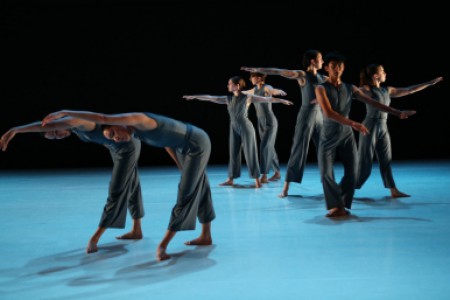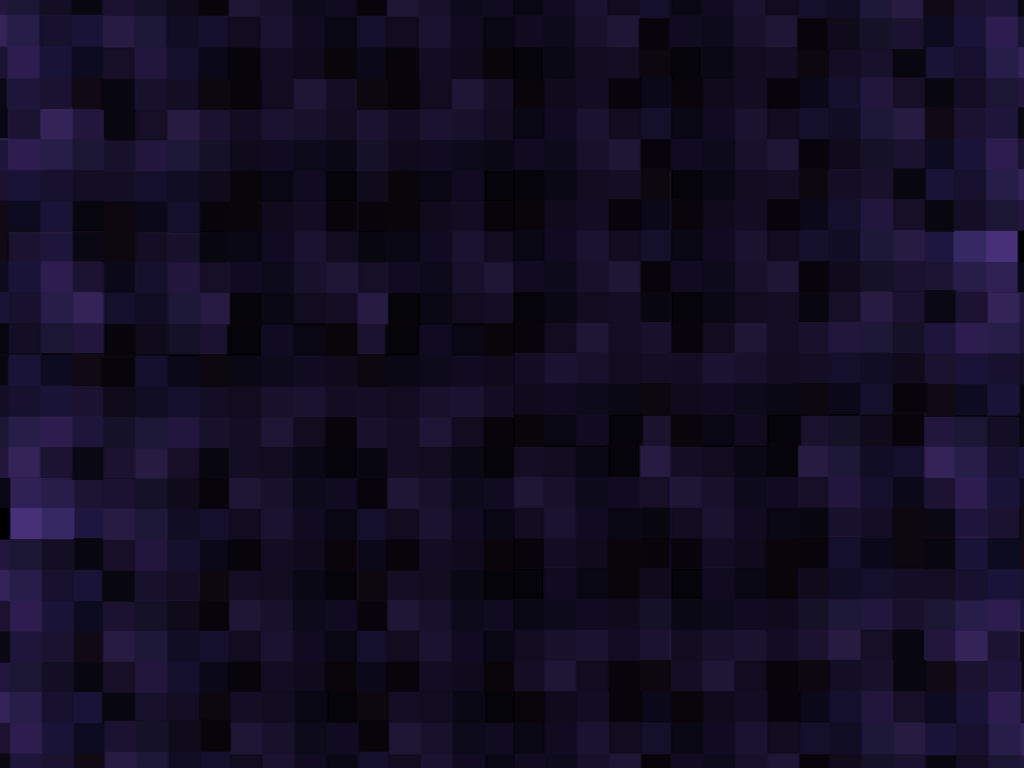"This dance is" - A definition in four acts
Katherine Bergstrom, Point of Contact
December 3, 2015
 Photo © Photo by Julieta Cervantes |
Katherine Bergstrom / December 4, 2015
Performed Friday, November 20, 2015
Barnard/Columbia Dances
New York Live Arts
New York, NY
There are few places on campus as unifying as Barnard College’s Department of Dance. Attracting students from a long and varied list of programs at Barnard and Columbia University, the department has distinguished itself as a creative haven, inviting aspiring choreographers and chemical engineers alike to take part in its offerings. Clearly, the department does not shy away from experimentation. It’s quite appropriate, then, that for one weekend every fall, Barnard’s dancers join New York’s downtown dance scene, taking up residence at New York Live Arts, a forward-thinking dance space in Chelsea. Featuring premieres from three local choreographers – Molissa Fenley, Caitlin Trainor, and Alexandra Beller – as well as a restaging of Mark Morris’s Canonic ¾ Studies, this semester’s program showcased the depth and diversity of talent thriving in the college’s uptown studios.
Dancers in Molissa Fenley’s “Amdo.” Photo by Julieta Cervantes
The program opened with Molissa Fenley’s Amdo (Water Table, part 7), a new work for eight dancers inspired by the lake-filled Amdo region of the Tibetian Plateau. The piece, one of eight sections in Fenley’s larger forthcoming work Water Table, featured the dancers exploring the expansive stage in pairs and trios. While immediate partners often move in unison, there is counterpoint between the groups, making the moments of whole-cast unison that much more resolute. Though Fenley’s choreographic preference for clean lines and generous repetition make her work visually calming, the dance’s combination with Ulfur Hansson’s original score was not always as clear. Hansson’s ultra-long electronic tones offered wavering support to Fenley’s rhythmic, methodical dance phrases. In an otherwise very smooth work, identical twins Ananda and India Gonzalez offered many moments of brightness, like ripples on the water’s surface.
Compared to Fenley’s benediction, Caitlin Trainor’s Cosmorama is a whirlwind. Set to music by Third Coast Percussion, a quartet known for pushing the boundaries of the contemporary percussion canon, Trainor’s choreography spills onto the stage as dancers tumble in from the wings and dart across the space. Beautifully costumed by Liz Prince is rose-hued pleated tops and dresses, the piece’s most effective moments are those that are the most sparse – a hyperspeed solo for Valentina Strokopytova was particularly memorable, looking as if she had just been flung out of orbit. There are few instances of repose in Cosmorama, but Trainor deftly finds sensitivity amidst aggressive tempos and the swirling mass of her 11-woman cast.
After intermission, things turned riotous. Art is as is, and as it is not, created by Alexandra Beller and the dancers, spared no expense in scrutinizing the field that these young dancers are preparing themselves to enter. Each dance phrase is given a verbal introduction lampooning the often cringeworthy “modern art” vocabulary of many a program note or grant application. “This dance examines the ephemeral yet liminal space between the signifier and the signified,” proclaims one dancer as two women stand at the back, one repeatedly yelling “Go!” while the other drops her head onto the screamer’s chest and proceeds to slide along her partner’s body until she ends up on the floor. The subtext: this dance is whatever you want it to be.
Caitlin Trainor’s “Cosmorama.” Photo: Julieta Cervantes
But Beller’s work is more nuanced than sheer mockery. She plays with the dancers’ youth and relative naivety in their eagerness to make meaningful dances, but lets their critical voices speak loudest of all. “This dance….is bullshit!” Carolyn Silverman angrily whispers. The audience chuckled knowingly; oh yes, we’ve all had that feeling before. As the dancers repeat the core movement phrases, recontextualizing them many times over, we get the sense that maybe dances can, and should, speak for themselves.
Advertisements
Report this ad
Mark Morris’s Canonic ¾ Studies, staged by former Mark Morris Dance Group member Marjorie Folkman, brought the program to a spritely close. Expertly accompanied by pianist Robert Boston, the canons each have their own character: some are comical or clever, others are academic and structurally motivated. All, however, exemplify Morris’s knack at tweaking ballet steps to his liking, and benefit from his signature musicality – a feature that was unfortunately lacking in many of the canons. To the dancers’ credit, the musical interconnectivity that has come to be expected from performances of Morris’s work takes time to develop; ten weeks of one semester is a very short time to inhabit a work. There were moments, however, when the beloved mix of humor, technique, and timing brought the stage to life – Jane Abbott’s outstanding performance in a trio consisting entirely of partnered jetés brought to mind the interpretive spark of Lauren Grant.
Taken together, this quartet of dances exemplified the difference between student work and work performed by students. In preparing these performances, students spend long nights twice a week with their lead choreographer, often working in highly collaborative environments that challenge them to contribute to the artistic direction of the work. In a matter of months, many of these dancers will leave campus and embark on the path towards professional artistic sustainability – attending auditions, scavenging for affordable rehearsal space, and filling out countless applications for grants, residencies, and performance opportunities. Barnard’s dance program offer students a unique opportunity to directly engage with their desired career field, and more than once a lasting artistic partnership has emerged from these intimate and intense creative periods. So, go forth, young dancers. Thankfully, you are well-prepared.
http://ptofcontact.com/2015/12/04/this-dance-is-a-definition-in-four-acts/
Two Pianos by Phoebe Legere filmed at Yaddo, Saratoga Springs, New York
August 15-December 31, 2025
Click here for details
Salone at Judson Memorial Church
March 17, 2026
Click here for details
Dance an Impossible Space (Trio Version)



